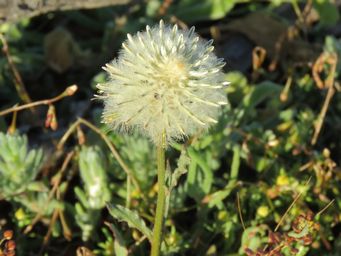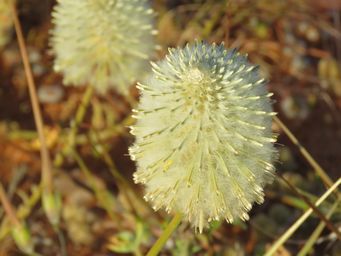Australia So Much to See
Copyright (C) 2013 AustraliaSoMuchtoSee.com. All reights reserved
Sources used for identification of wildflowers shown on these pages and regions where they occur see Credits
These pages will
feature some of the wildflowers I have photographed in Western Australia, and where possible, identified. If you are able
to help identify further flowers, or correct any I may have wrong, please contact us.
Information given for each species will
give botanical name, known common names, describe the flower, give time of year it flowered, and where it was photographed, and the
areas it occurs in. Names have been matched to Florabase which has also been used to show distribution.
See some of
these wildflower in larger sized photos on our Flickr pages.
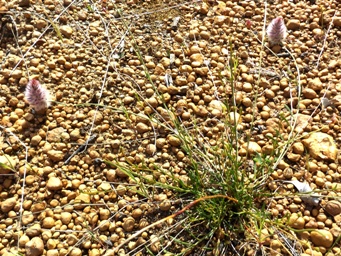
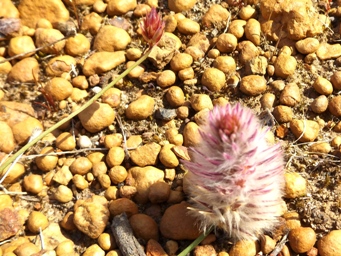
Ptilotus (species not indentified), Mulla Mulla
A small pink tipped pointed Mulla Mulla on a low growing plant with a
few fine leaves along the long stems
September
Bridgetown, South West Region, Western Australia
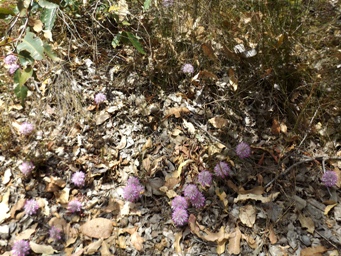
Ptilotus (species not indentified), Mulla Mulla
A small pastel pink pompom on a low growing plant with no leaves visible on
this specimen, flowers at the end of long prostrate stems.
December
Bridgetown, South West Region, Western Australia
Ptilotus manglesii Pom Pom, Father Christmas, Rose Tipped Mulla Mulla (above)
Single deep pink tipped white pom pom flowers
about five centimetres in diameter on short stems, with green or red leaves which may be oval or pointed, with a few smaller leaves
alternating along the flowers stems (as in photo above right). Some plants have red and green leaves
Spring, Summer
Bridgetown, South West Region, Western Australia and throughout the South West, Mid West, Great Southern and parts of the Wheatbelt
Spring, Summer
Bridgetown, South West Region, Western Australia and throughout the South West, Mid West, Great Southern and parts of the Wheatbelt
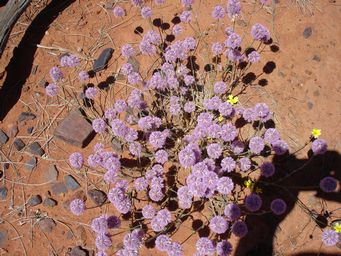
Ptilotus helipteroides, Hairy Mulla Mulla, Woolly Tails
Flower spikes pink or magenta, conical or rounded and fluffy. Basal
and leaves along stems are five to seven centimetres long, narrow and hairy, edged in tan, and terminating with a spine. Stems
hairy and with longitudinal stripes faintly evident. Plant upright or spreading.
August September
Yalgoo, Mid West region, and
Agnew, Leonora shire, Goldfields region, Western Australia. Grows in the Pilbara, through the Gascoyne, inland Mid West, Goldfields
and into the north eastern Wheatbelt regions, Western Australia.
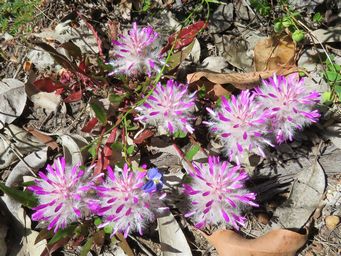
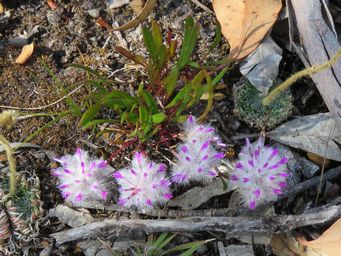
A smaller variation of Ptilotus mangelsii (above)
Single deep pink tipped white pom pom flowers around two centimetres diameter
on short stems, with pointed green or red leaves. These are similar to Ptilotus davisii but I have been reliably informed they
are Ptilotus mangelsii
Spring, Summer
Bridgetown, South West Region, Western Australia.
Bridgetown, South West Region, Western Australia.
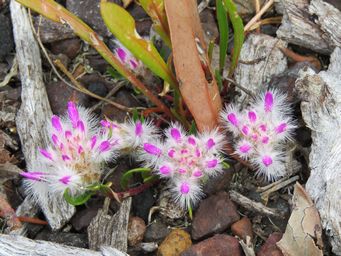
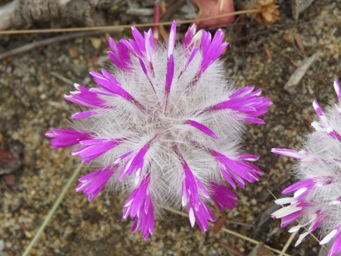
F
Ptilotus macrocephalus in Western Australia is now known as a separate species, Ptilotus xerophilus, Featherheads. See
details hereunder.
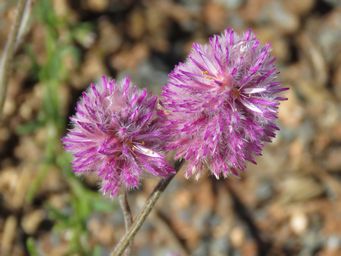
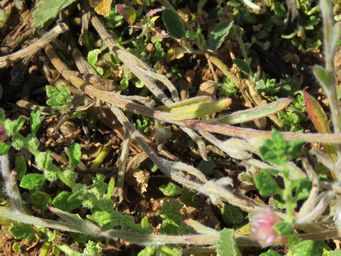


Ptilotus polystachyus Prince of Wales Feather, Long Tails, Bottlewashers, Green Mullamulla
Tall light green heads on long stems
Winter,
Spring, Summer
Mullewa in the Mid West region, and found in areas through most of the state, including in the Kimberley, parts of the
Wheatbelt, and Perth environs with the exception of the southernmost areas of the South West and Great Southern regions and much
of the south coast (with exceptions). The known range of this Ptilotus is expanding, and it is considered a weed in some places where
it has become prolific.
Ptilotus obovatus Cottonbush (at left)
A bush which in bloom is covered with fluffy purple and white pompoms
Winter, Spring
and early Summer
Yalgoo, and found through much of the state with the exception of the South West, Great Southern and Kimberley regions
Ptilotus sp. Porongurup, together with Ptilotus sp. Beaufort River have been combined as the newly named species Ptilotus davisii (2020).
See previous page.
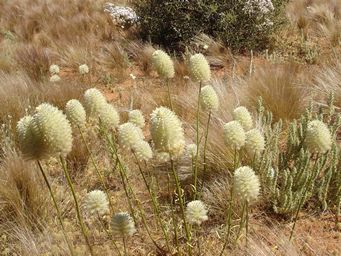
Ptilotus xerophilus (previously included with Ptilotus macrocephalus but considered a separate species in 2019), Featherheads.
Green to white oblong flower clusters on tall stems.
August September
